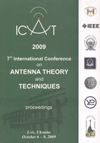Influence of interference in GSM network and optimum solutions
DOI:
https://doi.org/10.1109/ICATT.2009.4435161Keywords:
interference, BS, power control, antenna heightAbstract
The frequency band used in GSM network is mostly overload. For required network access traffic surface the channels inside the network are repeatedly used. It increases the negative interference processes. As a result the quality of service and the network capacity become lower. The effective optimisation methods decreases the interference influence and guarantees the comfort signal to noise ratio.References
STALLINGS, W. Wireless Communications and Networking. New Jersey: Prentice Hall, 2003.
LEMPIAINEN, JUKKA; MANNINEN, MATTI. Radio Interface System Planning for GSM/GPRS/UMTS. Kluwer Academic Publishers, 2002.
KAMENSKII, N.N.; MODEL, A.M.; NADENENSKO, B.S. Handbook on Radio Relay Communication. Moscow: Radio i Svyaz, 1981, 121p.
ISOTALO, T.; NIEMELA, J.; LEMPIAINEN, J. Electrical antenna downtilt in UMTS network. Proc. of 5th European Wireless Conf., EW'04, Spain, 2004, p.265-271.
FORKEL, I.; KEMPER, A.; PABST, R.; HERMANS, R. The effect of electrical and mechanical antenna down-tilting in UMTS networks. Proc. of Int. Conf. on 3G Mobile Communication Technologies, 2002, v.489, n.3, p.86-90.
Published
2009-10-10
Issue
Section
Antennas for communications and broadcasting

